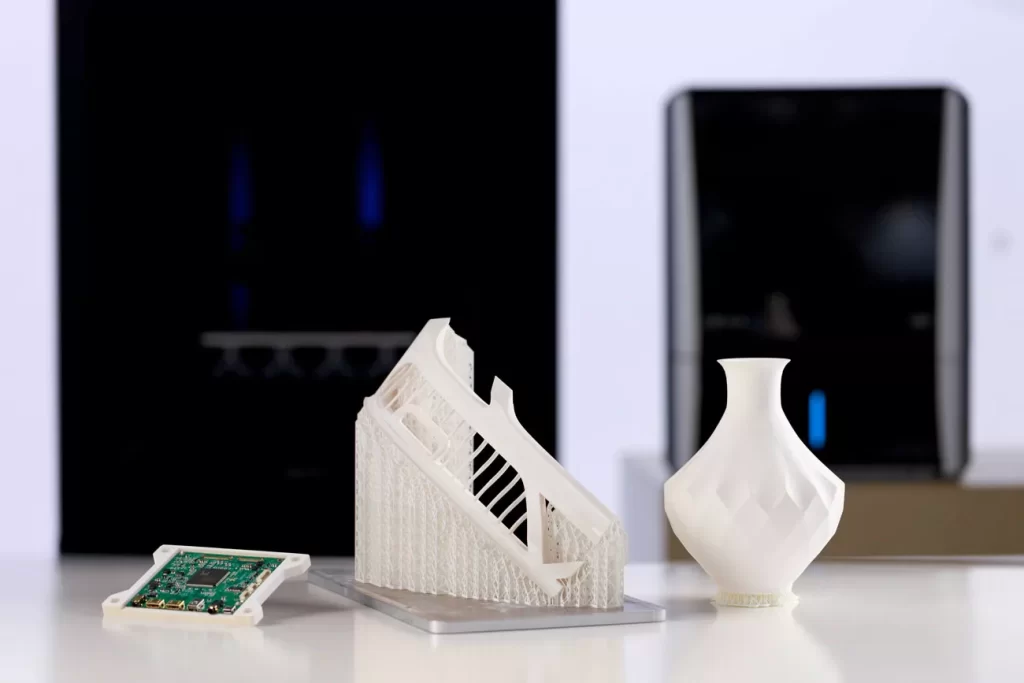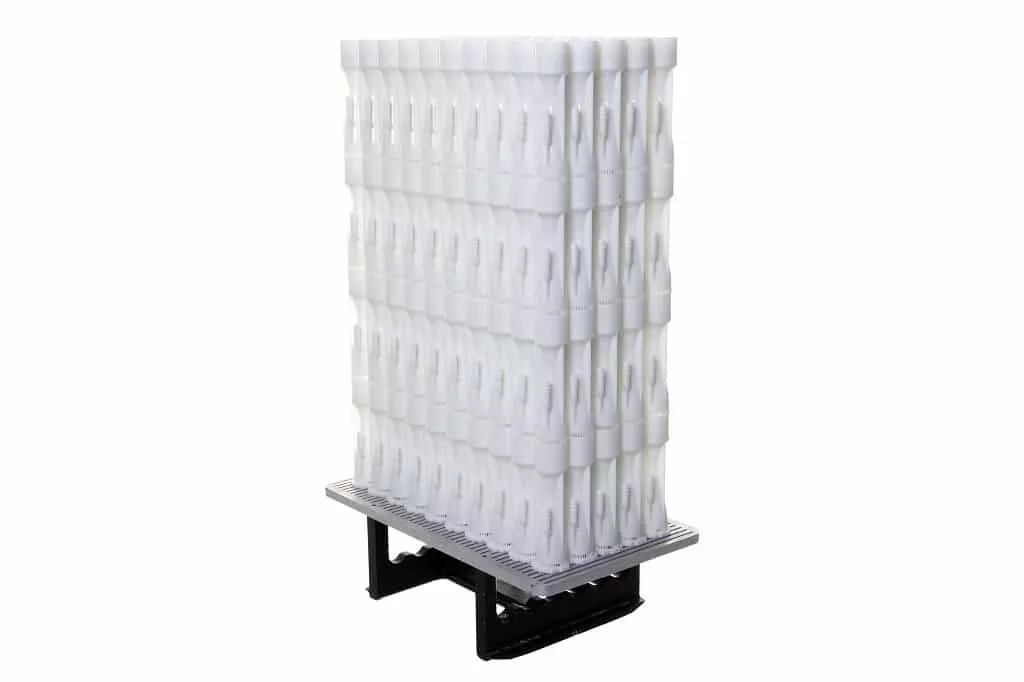Nexa3D LSPc Resin 3D Printing Service
Blazing Fast Parts Made From Production Photopolymers
Quickly prototype and produce parts without tools
Nexa3D’s Lubricant Sub-Layer Light Curing (LSPc®) technology delivers extremely fast and accurate 3D printing, making it suitable for low- to high-volume production. Get parts made from a variety of materials, including materials that simulate ceramic and rubber as well as engineered functional resins for the medical, dental and commercial industries. Rapid Manufacture’s facilities utilize NXE 400Pro and XiP Pro production printers as well as XiP desktop printers for low-volume and prototype work.
In addition to traditional printed prototypes, Nexa3D LSPc® and its advanced resins can produce end-use parts, making it an excellent alternative to polyurethane casting or low-volume injection molding.
Nexa3D LSPc® Resin 3D Printing Online Quote
Rapid Manufacture uses the most advanced and efficient online quoting service with a focus on product geometry and manufacturability. Configure your part and get a manufacturing quote from the interactive quoting platform in seconds. With Instant Quote System’s free automated DFM analysis reports, you can ensure better processing performance, lower manufacturing costs and faster delivery times.
Nexa3D LSPc® General Tolerances
| Description | Tolerance Notes |
|---|---|
Tolerance, XY Plane | +/- 0.005” for the first inch is typical, plus +/- 0.002” for every inch thereafter |
Tolerance, Z Plane | +/- 0.010” for the first inch is typical, plus +/- 0.002” for every inch thereafter |
Layer Height | 100 µm / 0.004 in |
Ideal Part Size | Part’s below 2″ x 1″ x 3″ or smaller tend to have the best production economy of scale. |
Build Volume | Up to 10.8 x 6.1 x 15.7 in |
Minimum Wall Thickness | 0.030″ or larger is suggested for any walls, text, or lattice features. |
Pixel Size | 52µm – 76.5µm |
LSPc® Materials Available at Rapid Manufacture
| Material Name | Description | Tensile Strength (MPa) | Elongation at Break (%) | HDT at 0.45 MPa (°C) | Data Sheets |
|---|---|---|---|---|---|
|
xMODEL17 Clear |
Clear/Translucent prototyping resin |
30 MPa |
22% |
47°C |
xMODEL17 Data Sheet |
|
3843-xABS Black |
Engineering grade, ABS-like |
32± 1 MPa |
50% |
56°C |
xABS3843 Data Sheet |
|
xESD |
Engineering grade, static-dissipative (10^7 Ω) |
68.1 MPa |
3.8% |
91.3°C |
xESD Data Sheet |
|
xPP405 Black |
Engineering grade, black PP-like |
35 ±2 MPa |
100% |
52.8°C |
xPP405 Black Data Sheet |
|
xPEEK147 |
Engineering grade, High temp (HDT 238C) |
75 ±2.0 MPa |
3% |
238°C |
xPEEK147 Data Sheet |
|
xFLEX402 |
Semi-firm rubber-like elastomer (Shore A 73) |
5.5 MPa |
230% |
(Unavailable) |
xFLEX402 Data Sheet |
|
xFLEX475 Black |
Soft, high-rebound, rubber-like elastomer (Shore A 44) |
2.48 ±0.3 MPa |
150% |
(Unavailable) |
xFLEX475 Data Sheet |
|
xFLEX475 White |
Soft rubber-like elastomer (Shore A 55) |
3.8 ±0.8 MPa |
159% |
(Unavailable) |
xFLEX475 Data Sheet |
|
xCERAMIC3280 |
Ceramic composite-filled resin, Highly stiff |
85 MPa |
1.2% |
205°C (278°C After Post-Thermal Cure) |
xCERAMIC3280 Data Sheet |

Available Finishes for Nexa3D LSPc® Parts
Our default finish. The supported surfaces will be lightly sanded with 220 or 320 grit sandpaper, then media blasted for a uniform matte finish.
Supported surfaces will be lightly sanded with 220 or 320 grit sandpaper for improved surface quality. Sanding scratches will be visible on supported surfaces.
Supported areas may show small grid-like dots or surface blemishes as a result of support removal.
Rapid Manufacture provides additional finishing options, including but not limited to sanding, polishing, painting, post thermal processing, and plating to meet your needs.
What is Nexa3D LSPc® Technology?
LSPc stands for Lubricant Sublayer Photo-curing, which can be categorized as a type of mSLA (masked stereolithography apparatus) printing process. This type of printing technology uses an LED (light-emitting diode) array as a light source and an LCD (liquid crystal diode) photomask to selectively shape image layers. The images pass through a membrane on which layers of photopolymer resin are cured. As each layer is cured, the build platform moves up, the resin is replenished, and the next layer begins to set, building up parts over time. The key to Nexa3D’s LSPc technology is their proprietary Everlast membrane designed to minimize peel and separation forces during printing. The specialized membrane is chemically inert, flexible, and does not rely on oxygen-permeable elements for lubricity. This enables LSPc technology to print in a wide range of resins with unparalleled speed and efficiency.
After printing, the parts are washed to remove uncured resin and receive a final post-cure in a UV light oven. Nexa3D’s open material platform has a host of engineered resins, most of which do not require any additional post-processing steps other than the standard UV cure to achieve final part properties. While similar technologies and their materials, such as Carbon DLS™, may require and benefit from additional processing steps, they can lead to longer post-processing times and higher material costs. The efficiency and simplicity of post-processing LSPc® parts is another factor that makes this technology advantageous for high-volume 3D printing and a potential substitute for other production methods such as urethane casting or quick-turn molding.
Benefits of LSPc® 3D Printing
The speed and efficiency of Nexa3D’s LSPc® 3D printing process make it an excellent solution for quickly iterating designs and producing pieces in higher quantities. A host of carefully selected and engineered printing resins allows components to exhibit unique properties and withstand end-use applications and environments. LSPc® printed parts demonstrate high resolution, detail, dimensional accuracy, and excellent surface finish.
With LSPc®, the number of parts does not affect the printing speed of each layer. This makes it particularly advantageous for printing high quantities of smaller pieces in a short amount of time. Simple post-processing procedures and swappable build trays in platforms like Nexa3D’s XiP printer allow further production efficiency. LSPc® can act as a great bridge between initial production and higher quantity production solutions such as our injection molding service.
- Ultrafast printing speeds
- Wide range of engineered materials
- High dimensional accuracy and detailed resolution
- Smooth natural surface finish
- End-use parts in high quantities

